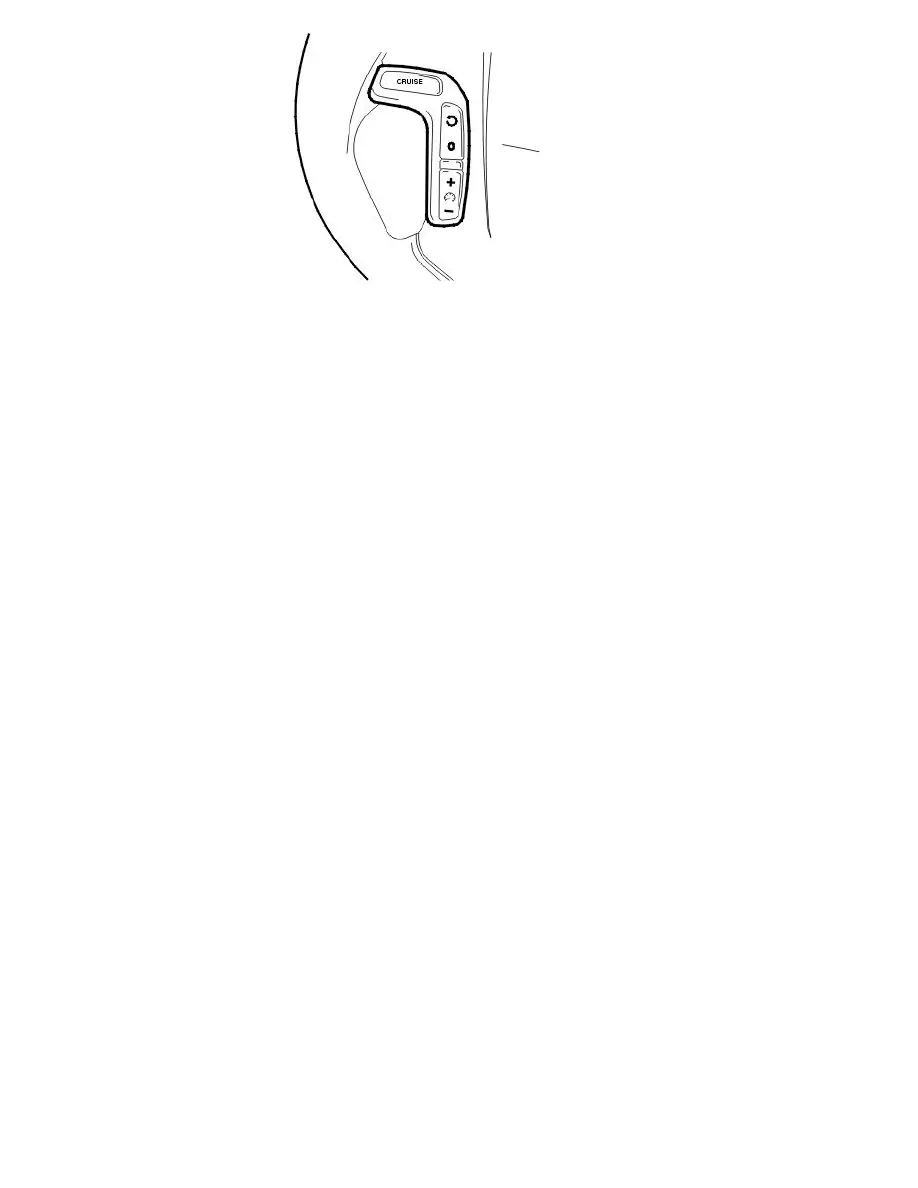XC90 L5-2.5L Turbo VIN 59 B5254T2 (2004)

The cruise control function is an example of distributed functionality.
The following components are used when driving using cruise control:
-
engine control module (ECM)
-
electronic throttle unit
-
brake control module (BCM)
-
accelerator pedal (AP) position sensor
-
clutch pedal sensor
-
brake pedal sensor
-
control unit cruise control
-
steering wheel module (SWM)
-
central electronic module (CEM)
-
transmission control module (TCM)
-
driver information module (DIM).
To activate cruise control the function must be switched on using the "CRUISE" button. A lamp lights up in the driver information module (DIM).
The driver activates the function by pressing the SET+ or SET- button. A message is then transmitted via the low speed side of the Controller area
network (CAN) to the central electronic module (CEM) which then transmits the message on via the high speed side of the Controller area network
(CAN) to the engine control module (ECM).
The engine control module (ECM) controls the throttle angle so that a constant speed is maintained using the vehicle speed signal from the Brake
Control Module (BCM). The transmission control module (TCM) also receives a message indicating that cruise control is active via the Controller area
network (CAN), so that the transmission follows certain shifting patterns when the cruise control is active.
If the accelerator pedal (AP) is depressed the speed increases as normal and then resumes to the stored value when the driver releases the accelerator
pedal (AP) again.
The engine control module (ECM) continually stores the speed. If the cruise control is disengaged, if for example the driver presses the brake pedal, the
previous stored speed can be used by pressing the "RESUME" button.
Cruise control cannot be activated at speeds below 35 km/h.
Cruise control is disengaged:
-
when the driver presses the clutch pedal or brake pedal
-
when the driver presses the "CRUISE" button on the steering wheel
-
when the driver depresses the "0" button on the steering wheel
-
if the "P" or "N" positions are transmitted on the controller area network (CAN) (applies to automatic transmissions)
-
if the speed deviates too much from the set value
-
when certain diagnostic trouble codes (DTCs) are stored which do not allow continued activation (For further information see diagnostic trouble
code (DTC) information).
Fuel pressure regulation (only vehicles with demand controlled fuel pumps)
